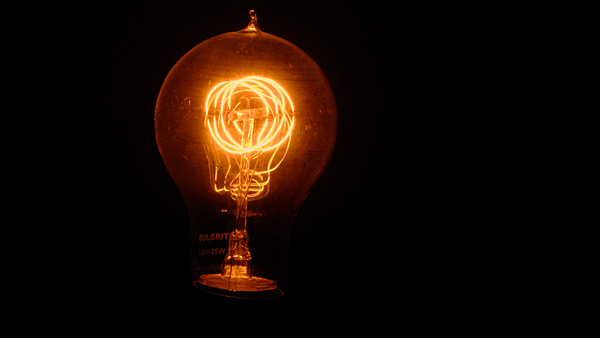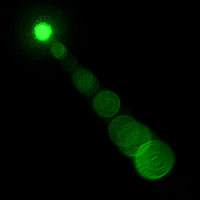What Is Light?
The technical definition of light from the Commission Internationale de L'Eclairage (CIE, the group that defines such things) is "Any radiation capable of causing a visual sensation directly". Loosely translated, light is electromagnetic radiation that we can see. Ultraviolet and infrared energy are also electromagnetic radiation, but we cannot see them so it is incorrect to call them "light". There is no such thing as "ultraviolet light" or "infrared light". Even though those terms are used colloquially (and sometimes by optical scientists), the more proper terms are "ultraviolet radiation" and "infrared radiation". Unfortunately people often don't like to use the word "radiation" because they associate it with radioactivity and nuclear radiation. Historically, it was recognized that light was some form of energy, but there were competing theories of its nature. Some considered light to be made up of particles, while others thought light was made up of waves.
The idea that light is made up of particles gained favor in the 1600s with the support of Sir Isaac Newton. He used the properties of light reflection and the fact that light travels in straight lines (in homogeneous isotropic media) to support his theory of light particles, or corpuscles. He however had difficulty explaining light diffraction (light bending around objects) with a particle theory and that turned out to be one of the reasons the wave theory of light became more popular later on. Interestingly, Albert Einstein brought back particle theory to some extent with his observation and explanation of the photoelectric effect (light striking a metal surface can produce an electrical current). This helped more recent researchers to figure out that light behaves as both a particle and a wave.
Sound energy travels through the air in waves that our ears can sense and we can observe waves on the surface of water as energy we can feel. Light also shares some of these properties. For example light diffracts, or bends, around surfaces in the same way that water waves can be observed to do. Thomas Young observed this and also observed the interference of light waves (again like the interference of water waves) and was one of the proponents of wave theory. Later on James Clerk Maxwell and others were able to explain light in terms of electromagnetic theory that still serves us well in modern technology. Thus, light was shown to be a form of electromagnetic energy just like radio waves, X-rays, infrared energy, and ultraviolet energy.
Ultimately, all these observations resulted in the concept of wave-particle duality, the idea that light sometimes behaves like waves (electromagnetic theory) and sometimes behaves like particles that define discrete units of energy (known as photons). This duality allows us to describe light well enough to utilize and control it in modern technology like television systems, digital cameras, and computer displays. Most recently, the quantum-mechanical theory of light (and all electromagnetic radiation) has been further developed and formalized into what is called a quantum field theory that is often referred to as quantum electrodynamics, or QED. Try doing some research on some of these terms if you'd like to learn more about the nature of light.
![]()
Explore the NEXT TOPIC at this level.
Explore the NEXT LEVEL on this topic.
Ever wonder ... If no light falls on an object, does it still have a color?
Updated: Dec. 31, 2010

